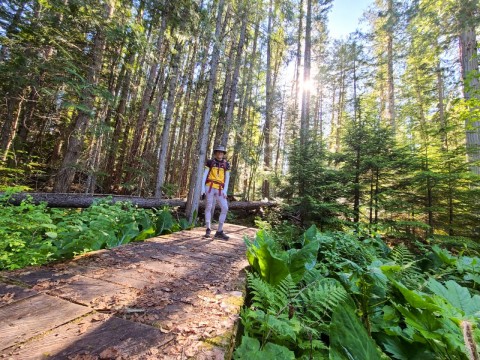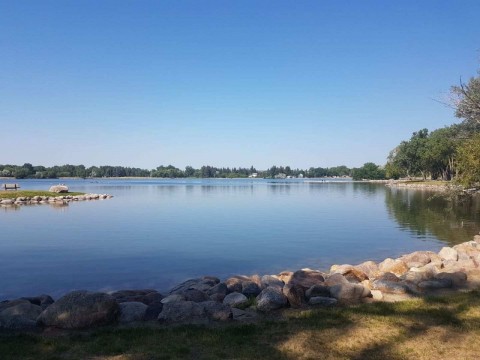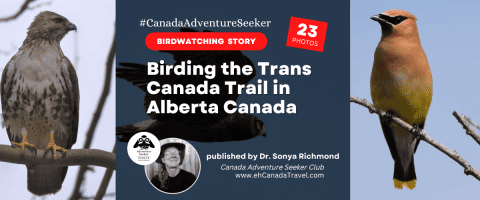Elk Island National Park
.jpg)
Park Amenities:
The Elk Island National Park is a wildlife management region and activity destination located east of the community of Edmonton, Alberta, Canada in the Central Alberta region. Nudged up next to the park, on the southern boundaries, is the Cooking Lake-Blackfoot Provincial Recreation Area. When combined, both parklands provide endless days of activity and wildlife sightings.
 The Elk Island National Park was first established in 1906 as a wildlife sanctuary for the plains bison (north park). Later, in 1922, the park expanded to provide opportunities for recreation and activity (central park). And in 1947 the park was further expanded to include a sanctuary for the wood bison (south park).
The Elk Island National Park was first established in 1906 as a wildlife sanctuary for the plains bison (north park). Later, in 1922, the park expanded to provide opportunities for recreation and activity (central park). And in 1947 the park was further expanded to include a sanctuary for the wood bison (south park).
The Elk Island National Park is a unique mixture of aspen forests, wetlands, black spruce bogs, lakes, creeks and grasslands. It is a complex eco system for wildlife which once roamed the southern boreal plains and grassland plateaus of the region.
The park was original designed for the conservation and protection of rare and endangered wildlife species. Today, it is still protecting a growing number of species including moose, deer, beaver, coyote, bison, birds and one of the largest herds of Elk in Canada.
The plateau wetlands are a popular breeding and nesting ground for various bird species. The park just happens to be located on the migratory pathway of many bird species. There are said to be over 200+ bird species identified as living and visiting in the Elk Island National Park.
The central region of the Elk Island National Park is reserved for year round recreation and activity. Some of the summer adventures enjoyed in the park include wildlife viewing, hiking, canoeing, camping, picnicking, birdwatching and kayaking.
During the winter months, after the snow has fallen and the lakes have frozen, the park is a popular destination for cross-country skiing and snowshoeing.
There are many recreation trails located in the park. Some of the trails are interpretive routes with information signs and lookout viewpoints. The trail network in the Elk Island National Park is very well signed and each trail is designated as, either, a shared trail or for a specific activity. Please obey all signs.
The trails in the Elk Island National Park vary in difficulty and distance. The trail network includes the Hayburger Trail (10 km), Simmons Trail (3.5 km) Shirley Lake Trail (10 km), Moss Lake Trail (13 km), Amisk Wuche Trail (2.5 km), Lake view Trail (3.5 km), Beaver Pond Trail (3.5 km), Living Waters Boardwalk Trail (300 metres), Tawayik Lake Trail (16.6 km), Shoreline Trail (6 km) and the Wood Bison Trail (16 km).
Most popular wildlife sighting trails include the Wood Bison Trail, Shirley Lake Trail, Beaver Pond Trail, Lakeview Trail and the Hayburger Trail.
Most popular birdwatching trails include the Shoreline Trail, Lakeview Trail and the Living Waters Boardwalk Trail.
Most popular xc ski trails are the Hayburger Trail, Shirley Lake Trail, Moss Lake Trail and the Tawayik Lake Trail.
Best snowshoeing trails are the Lakeview Trail and Amisk Wuche Trail.
Picnic sites are located throughout the central portion of the park. Some of the most popular picnic sites with great views are located at Tawayik Lake and the Astotin Lake areas.
Canoeing and kayaking are permitted on Astotin Lake and Oster Lake. Motorized boats are not permitted in the park.
Camping is only permitted at the designated campgrounds in the Elk Island National Park. The campgrounds are located on Astotin and Oster Lake.
The Yellowhead Highway (Hwy #16) travels through the south end of the park inbetween Little Tawayik Lake and Flyingshot Lake. There is a fee for entering the park, driving through the park and for camping in the park
From the Yellowhead Highway you can access the Elk Island Parkway which travels in a north-south direction in the park. The parkway is a sightseeing route with pull out viewpoints and lookouts. Please at all times in the park be aware of wildlife on the roads.
Address:
.jpg)








